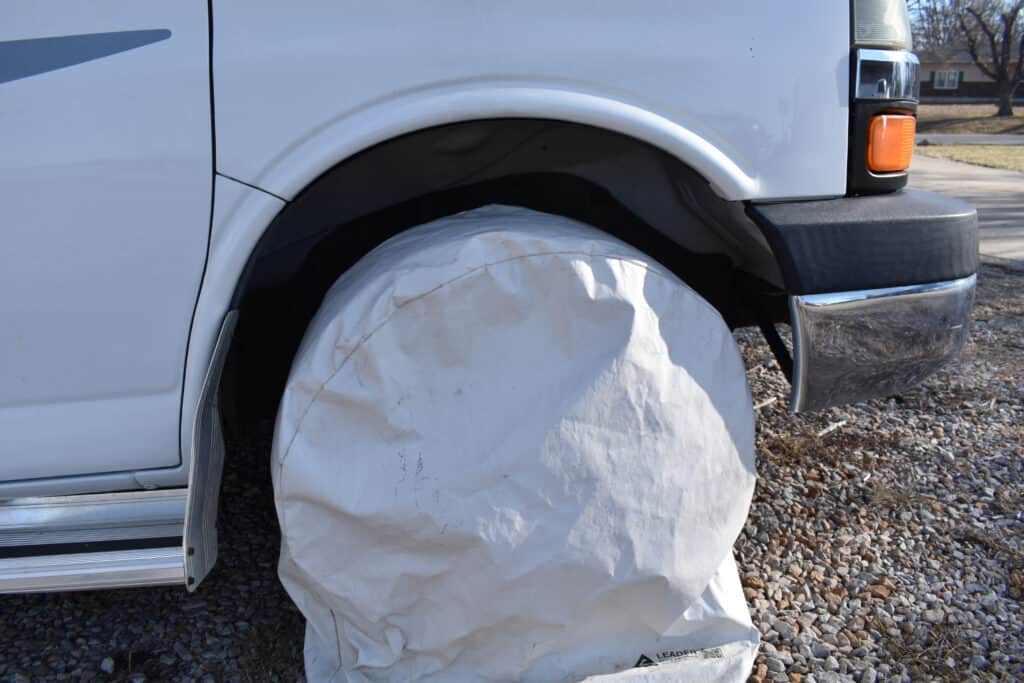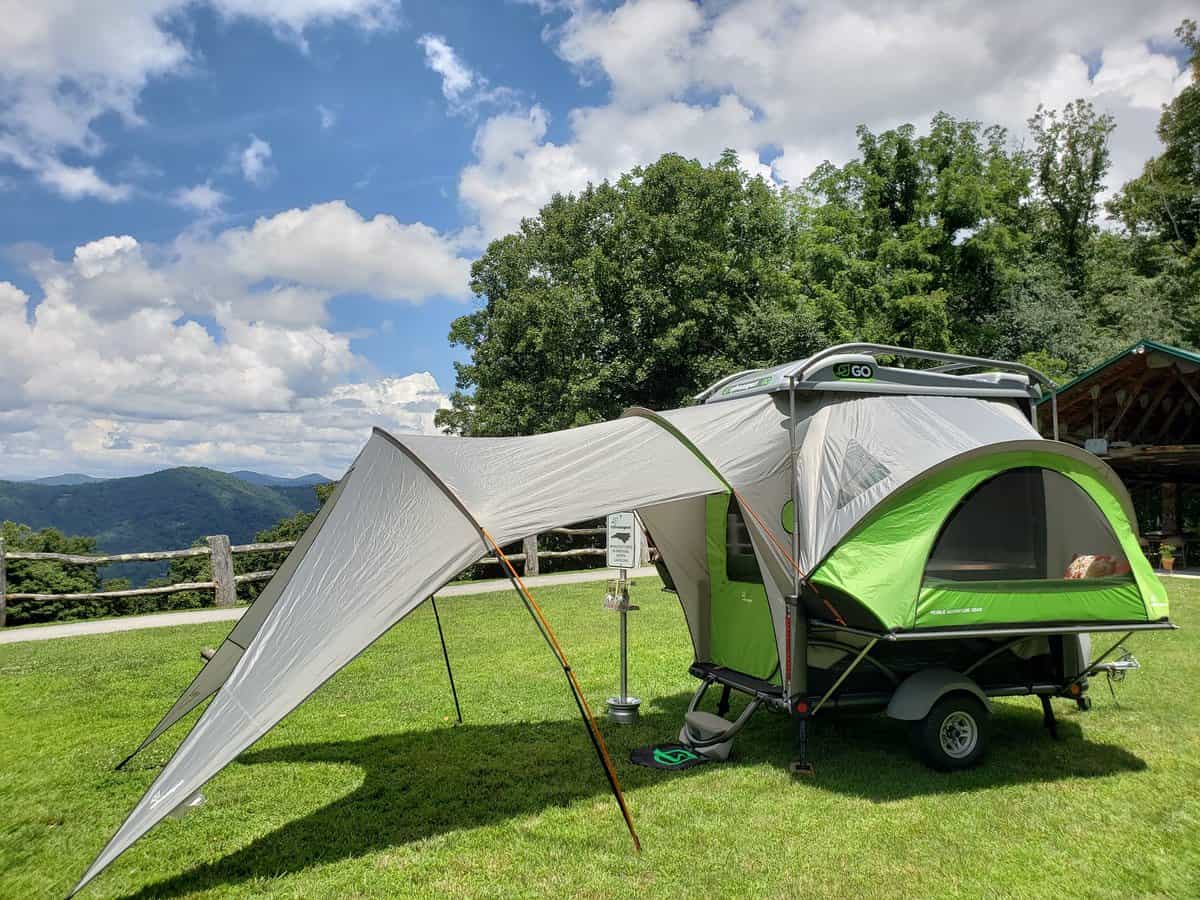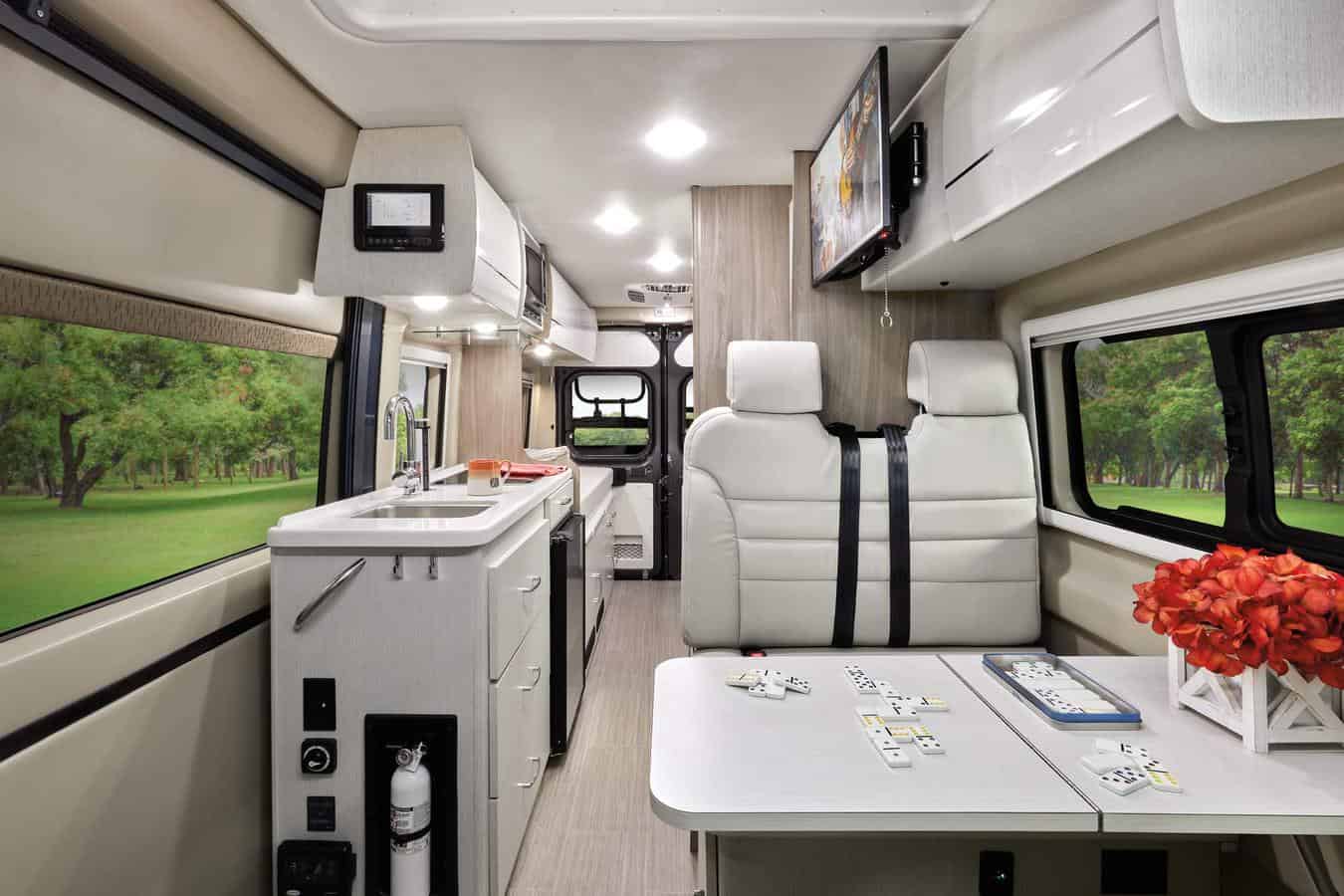
The Pros And Cons Of Camper Tire Covers
People have different opinions about the need for camper tire covers.
My personal experience might be of some value here. We traveled 120,000 miles over a 20-year span in our RV. We stored the RV outdoors when not in use, we never used tire covers, and we only replaced the tires twice during that 20-year stretch. As a side note, the last time we replaced the tires was right before we decided to go full-time, and those tires only had about 8,000 miles on them when we sold that coach, so two sets of tires lasted 18 years and 112,000 miles.
We only had one flat tire on an inside dual during all of our travels. Admittedly, we did buy the best quality tires available when we replaced them, and we had them siped to reduce the damage caused by excessive heat build-up.
Another environmental variable that may have played a significant role in our tire wear is that we lived in Oregon, and most of our 20 years of RVing was in the Pacific Northwest. We never experienced the extreme heat for extended periods of time like many other places in the country. Yes, Oregon summers can get hot, but not like Arizona, Nevada, or Texas, or other places that have prolonged periods of tire melting weather. Additionally, when not in use, we parked our RV in a location that reduced direct sunlight on the tires.
During all that time, we never really considered tire covers as a necessity, until we started traveling in other parts of the country. The heat and humidity in Florida in late October almost melted these two Northwest daisies. It was a rude awakening to discover how hot some parts of the country are, and the more time we spent in that relentless sunshine, the more we realized that tire covers might be a good idea. Frankly, we never really understood the idea of tire covers until we spent many months traveling through the south.
The downsides of tire covers
- The cost (About $60 each and up, times two, four, or six)
- The hassle of putting them on and taking them off
- The potential need for fasteners around the wheel wells
- The noise of them flapping in the wind
- The extra space they will take up in the basement
Pros of camper tire covers
All of the downside arguments listed above are outweighed by one simple benefit. Prolonged tire life.
Some people might consider camper tire covers aesthetically pleasing, but in my humble opinion, that would not be reason enough to spend the money and take the time to install and remove the tire covers. But the prolonged tire life is a compelling enough reason to buy and use tire covers.
After all, RV tires are expensive (> $400 times 4, 6, or 8) and just rotating the tires on a regular basis will not prolong the life of the tires as much as consistently reducing their exposure to damaging UV rays.
I once had a Les Schwab tire store manager explain to me that most RV tires rot before they wear through the tread, and that most of that decomposition occurred on the inside of the tires, not the surface. Excessive heat and the UV rays from direct sunlight exacerbate the decay, so if you can reduce their exposure to ultraviolet light, then you can mitigate the deterioration.
I checked in with the IRV2 forums regarding the need for camper tire covers. The vast majority of the posts were in favor of them, and some people were passionate about the amount of prolonged life you can expect from your tires if you consistently keep them covered.
I’ve seen tire covers snapped onto fasteners that had been installed around each wheel well, and I’ve seen canvas covers loosely draped over just the tires on the south side of the rig. But the most appealing covers were the ones that easily fit over just the rubber portion and leave the chrome wheels exposed. These covers attach with elastic straps, are easy to put on and take off, only cost around $60 each, and don’t take up much space in the basement.
There are other types of wheel covers that use magnets to keep them in place, but these require a metal structure, and an RV that has a wheel well, but not all campers or RVs have well wells. Also, you should be warned about the magnetic type of tire covers. Many of these style covers come with a warning to people who use medical devices, such as a pacemaker. Magnets can interfere with the operation of the medical device, so people with pacemakers should check with their doctor before purchasing magnetic tire covers.
All told, the general consensus is that camper tire covers are a good investment. You can use them perpetually and transfer them from one RV to the next if you trade in your RV for a different model with similar size tires. Tires wear out eventually, but slowing down their deterioration could save you a bunch of money.
I think the last time we replaced all the tires on our motorhome, the cost was nearly $2000, and the tires on our newer, heavier RV will cost close to $3000, so extending the life of these tires with 4 $60 tire covers and a little extra work seems like a bargain.

How many camper tire covers will you need?
Do you need two, four, or six camper tire covers? If you have tag axles on your rig, then there are two tires exposed to the sun on each side of the vehicle, as well as front tires if it’s a motorhome or van, so that would require 6 covers to fully protect all your RV tires.
If you opt for the screen covers that mount to the inside of your wheel wells, then you’ll only need four. If you’re towing a small trailer with dual tires on one axle, then you’ll only need two covers (one for each side) for your RV tires. But if your RV is a van or truck camper or a traditional motorhome with dual tires in the back, then you’ll need four covers to protect all the exposed tires.
To determine how many covers you’ll need, just count the tires you can see when walking around your rig. You may also want to add tire covers to your towing vehicle and not just your RV.
Do you need camper tire covers on both sides?
Do you actually need to protect both sides of your rig? Of course, it depends on where you’re parked, but in some locations, if your rig is facing north or south, the sun will come up on one side of your rig and go down on the other side.
In those cases, you’ll need 4 or possibly 6 covers for maximum protection. If you’re parked facing east or west, you might be able to leave the tires on the north side of your rig uncovered since they will perpetually be out of the direct sunlight. But if you’re going to use tire covers, why not be comprehensive and protect all of your tires, all of the time?
Conclusion
Spending $200 to $400 on camper tire covers compared to spending $3000 on new tires is a no-brainer. Yes, eventually you’ll need to replace your tires, but if you can extend their life by several years, the extra cost and nuisance of putting on camper tire covers will certainly be worth it.
RVers looking for valuable how-to information have learned to go to the experts. Forums such as iRV2.com and blog sites like RV LIFE, Do It Yourself RV, and Camper Report provide all the information you need to enjoy your RV. You’ll also find brand-specific information on additional forums like Air Forums, Forest River Forums, and Jayco Owners Forum.
Related articles:





I live in the Midwest so we have very cold winter temps. My tires have been in the direct sun daily, plus rain, snow, etc. I purchased four Camco tire covers on Amazon. Usually, Camco products are the lowest quality. These tire covers are an exception to that. These tire covers have thick elastic fittings around the top curve of the tire, which hugs the tire and keeps it on, even in high winds
Camco is a suitable choice for tires that are around 30 inches to 32 inches. Its material is guaranteed to be highly durable and sturdy, making it long-lasting.
Hi Peggy,
Just reading the article on tire covers. This statement about the covers – the most appealing covers were the ones that easily fit over just the rubber portion and leave the chrome wheels exposed. Where is the best place and price to find these?
Thanks!
I’ll save the $200 instead by putting it into an S&P500 mutual fund and then put $30 a month (based your 3000 dollar tire cost estimate) into it to pay for my future tires which will likely age out in about 7 years from new. RV tires rarely wear out so preserving them with covers so the they can look nice and look serviceable beyond their “age out” date is both naive and dangerous. Tires are best preserved by proper inflation (improper tire inflation is the number one cause of premature tire failure). Get a cheap infrared temperature gun to check your tires and wheel heat situation at every towing stop especially if long downgrades are involved.
What about using the tire sprays that seem to keep the tires moist which might avoid drying and root?
When you live at higher elevations you have less protection from the sun. If in addition to that you home parking spot is where one side of your trailer RV or not faces south then the UV damage is pretty severe.
I keep mine covered when parked on the south side. Most RVs are parked more than they are driven. I have 4 trailers parked outside and they are kept covered. I don’t haul the covers, just leave them there for when I return. My RV is kept indoors.
My Wife & I have a been a fulltime RV Couple in Florida for 3.5 years now. We Bought 6 new tires $2,400 for our 40′ Class A motorhome, that we bought for $10,000. I bought 4 tire covers at Camping World $90.00. After 1 year they were desinergrating. For the past 2.5 years I have done nothing with our tires except inspection and checking pressure. We have tires designed for RV use in sun drenched areas of the southern states. They are Michelin XZE Motorhome Tires. So far after 12,000 miles, we have had no tire problems.
I live in Albuquerque, NM where it is hot and dry. We bought our rig in 2019 and the local dealer highly recommended covers as we were storing outdoor in the heat and direct sun exposure.
So we purchased the $60/per tire style and just hated installing and removing them, as it meant crawling partially under the rig and then having to watch out for goat head stickers, along with the potential for black widow spiders and the occasional rattlesnake.
Last year I found AirSkirts – a company that makes a unique skirt system and on their site found they sold tandem wheel covers for $69 a pair, which is perfect for my RV. They come with a 5-year warranty and so far are great! I slip them over the tires and wrapped a strap around them to keep them in place. No crawling under the rig now! Just another option I thought I would share here.
https://www.airskirts.com/product/dual-axle-rv-tire-covers-set-of-2/
Mike
So, if tires rot from the inside as you say, then how long do you keep them since you can not see that damage. Me, 5 years on our trailer and they are done. One mishap and great damage. I have considered tire covers, but at the price of tires I would rather replace the tire rather than hope to get another few years. I am embarrassed to say I have seen stems break, tires split between the tread all around and shred on me; never again.
The best tire covers I had were $120.00 for four and were heavy duty lined vinyl and had a zipper that went half way around. They were a snap to put on and take off. I tried to find them on line when igot my new RV and could not find them.
Great article. I have a big pusher and I used tire covers since 2015.
I have a question about these motorhome bras good or bad thing?
I have not always used tire covers. I live in South Florida (yes the heat can melt rubber!) and I used to have a blowout every year or two, luckily not doing damange to the travel trailer. Then I discoverd tire covers, and bought some cheap ones at Harbor Freight, a pair for $10. They were only cloth, but that made such a difference and I didn’t have any more tire issues. I invested then in the ones that are vinyl on the outside and felted on the inside as they offer more protection. I use tire covers faithfully all the time now and I have not had a blowout since I started using them. You always have to go with what works for you in the climate where you live and camp. In our hot, humid, melt-you-all-day climate, you will see more folks with tire covers then without them.
I started using tire covers and full RV covers due to seeing the damage the sun can do to the RV as it sat parked on our property in the desert of California when we lived there.
Now, living in North Idaho, I still use covers for RV and tires due to all the stuff falling off of our trees onto the 5th wheel and, for the weather of the winters up here, snow, freezing weather etc., and there’s still the sun of summer, even up here!
Covers will always be the source of contention for many people. I use them, I know many will not. I use them to hopefully help our rig last longer, many don’t want the expense of any covers and don’t care how long it lasts, putting all their faith in the build quality of their rig. Good luck with that!